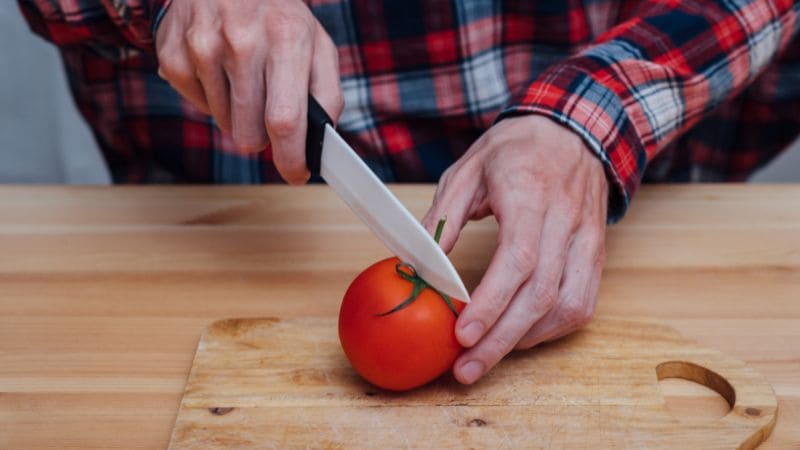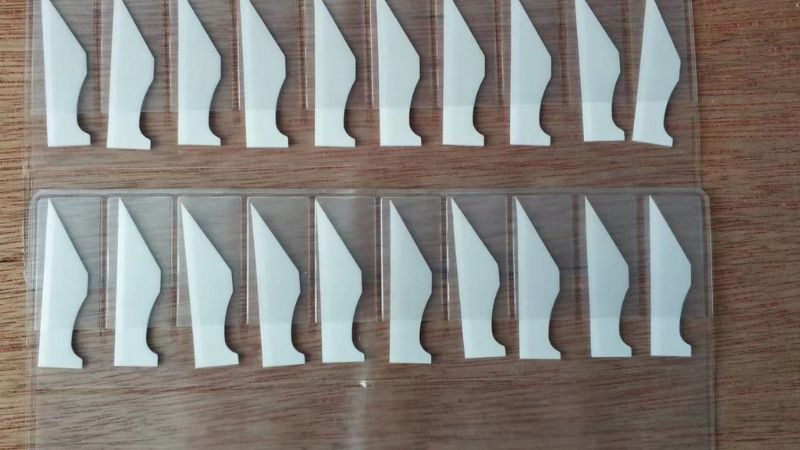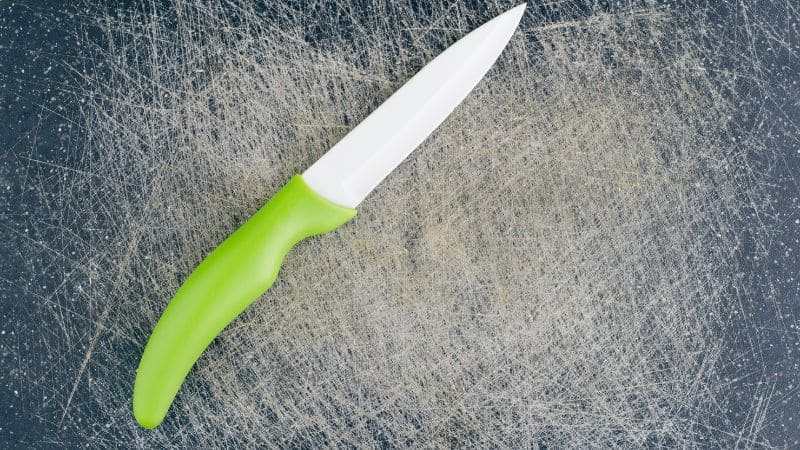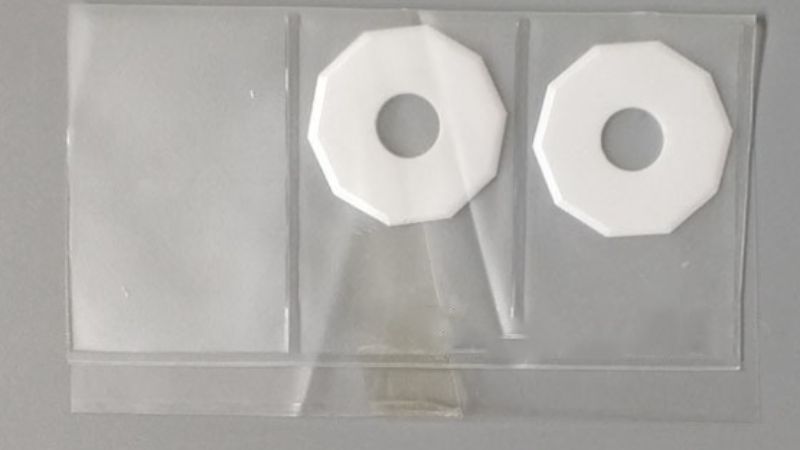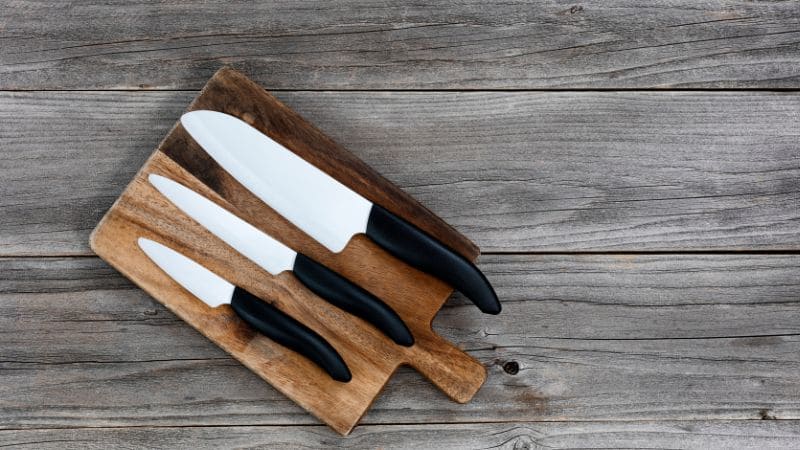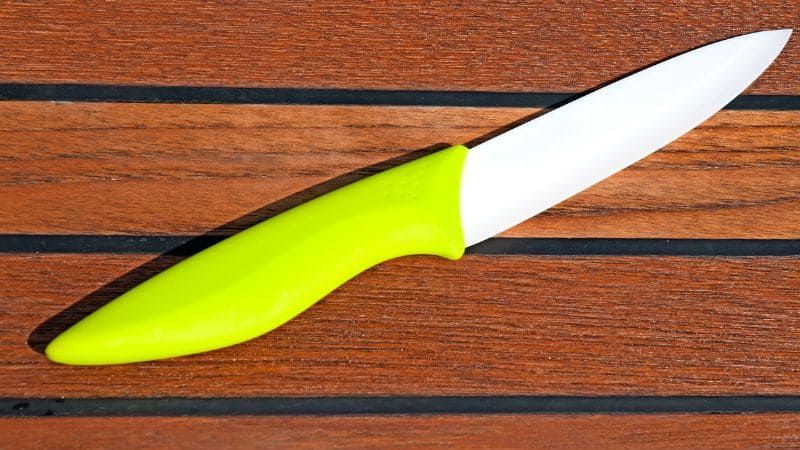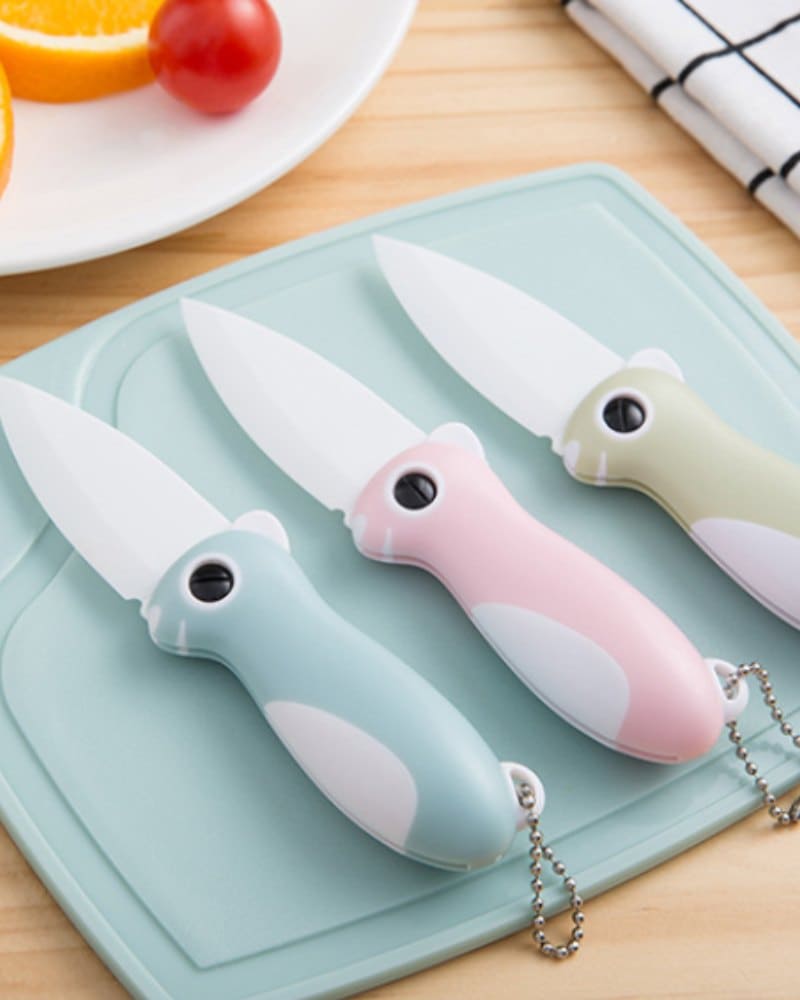Table of Contents
Cutting-edge, versatile, and ultra-efficient – ceramic knives have taken the culinary world by storm. Their precision, lightweight weight and rust resistance make them an ideal cookware for home cooks and professionals alike. However, there is a common and frequent question that people have: Do ceramic knives cut meat?
Ceramic knives can cut meat, and they do well with a boneless cut. Their finely honed edge slices through delicate meats, pasta and seafood like they’re butter. But it will ruin the blade to cut through bone or frozen things. Ceramic knives make cooking easier, with the right technique.
This guide provides detailed insight into what a ceramic knife can do, its advantages, and disadvantages for cutting meat.
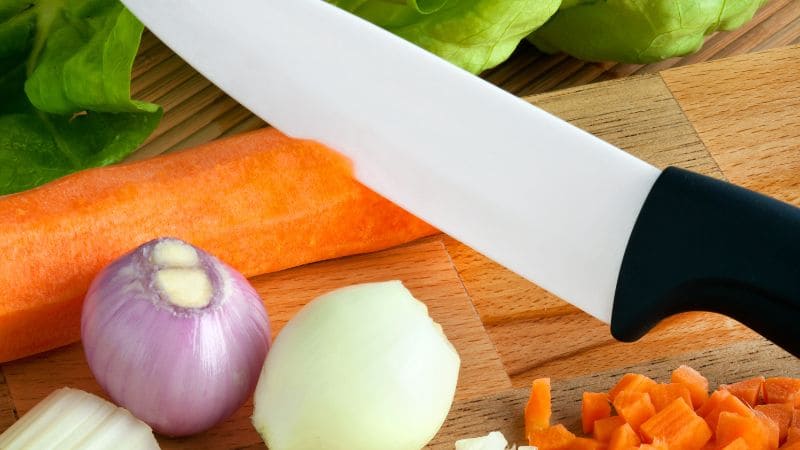
Cutting Meat with a Ceramic Knife – Does It Work?
Ceramic knives are great for cutting meats, however, their cutting ability varies greatly depending on the meat and the way you cut it. The serrated non-stick blade moves cleanly through softer meats and cuts evenly without shredding the meat. But ceramic paring knives aren’t meant for all kinds of meat.
What Meats Are Best for Ceramic Knives?
- Boneless Cuts – Perfect for cutting boneless portions of chicken breast or pork tenderloin or beef sirloin. The blade is precise and creates even cuts without compacting the muscle fibers.
- Cooked Meats – Whether you aim for roast beef or turkey, ceramic knives are good at slicing through pre-cooked meat items, offering uniform slices.
- Fish and Poultry – Ceramic kitchen knives glide through fish fillets and poultry with ease, making them ideal for more delicate tasks.
| Type of Meat | Suitability |
|---|---|
| Boneless Chicken or Pork | Excellent |
| Cooked Steak or Roast | Excellent |
| Raw Beef Tenderloin | Good |
| Fish Fillets | Excellent |
| Frozen Meat | Not Recommended |
| Bone-In Meats | Not Suitable |
Ceramic Knives: Beauty in Meat Cutting
Some of the best techniques to get the most out of ceramic fruit knives are:
- Long, Smooth Strokes – Apply gentle pressure and let the sharp edge do the cutting, don’t saw.
- Avoid Twisting – Twisting the blade creates chips or breaks. Always cut straight down or along the meat surface.
- Use Proper Surfaces – Ceramic knives are best used with wooden or plastic cutting boards that won’t dull the blade.
Fact: According to the JCK Cutter website, ceramic knives maintain their sharpness longer than steel knives, but are best reserved for slicing softer foods like boneless meats and vegetables.
Advantages of Using Ceramic Knives for Cutting Meat
The benefits of slicing meat using ceramic knives are what make them particularly advantageous when compared to steel knives. Their ultra-sharp edges cut thyoghgh like board butter, allowing for precise cuts and for cleaving paper-thin slices. But the advantages are more than just sharpness.
Precision and Sharpness
Ceramic knives have a superior edge retention compared to steel blades. This durability helps every slice go through with minimal tearing or crushing of the meat fibers. With fish, poultry, or beef tenderloin, the precision of a ceramic knife can make or break a professional-looking plate; use for all meats.
- Fact: Ceramic blades stay sharp for 10 times longer than steel knives.
- Benefit: Reduced downtimes with reduced sharpening for consistently defined cuts over longer periods.
Hygiene and Corrosion Resistance
Perhaps one benefit of ceramic knives that isn’t often talked about is that they are non-porous. These features make them less likely to retain stains, odors, and bacteria—important for hygiene when handling raw meat.
- Corrosion-Free – This is a major pro of a ceramic knife especially when cutting acidic foods or meats that may excrete juices because this knife will remain unaffected.
- Non-Reactive – Does not change taste or color of the food, maintaining the natural flavor of the meat.
| Feature | Ceramic Knife | Steel Knife |
|---|---|---|
| Corrosion Resistance | 100% – Does not rust | Prone to rust if not dried properly |
| Odor Retention | None – Non-porous surface | Can absorb odors from foods |
| Hygiene | High – Easy to clean | Moderate – Requires thorough washing |
Lightweight and Ease of Handling
Ceramic knives are significantly lighter than steel and place less strain on your wrist, making them easier to handle, especially for long periods of work in the kitchen. Makes for effortless, fatigue-free slicing due to the lightweight design for improved control and precision.
- Ideal for: Cutting large quantities of meat for meal prep or professional cooking.
- Benefit: Improved controllability that provides detailed decoupage with even a small dose of strength.
Quote: “The very light weight of ceramic cooking knives allows for high precision with little hand fatigue, which is why many chefs reach for them during long periods of prep.” – Kyocera Chef’s Review
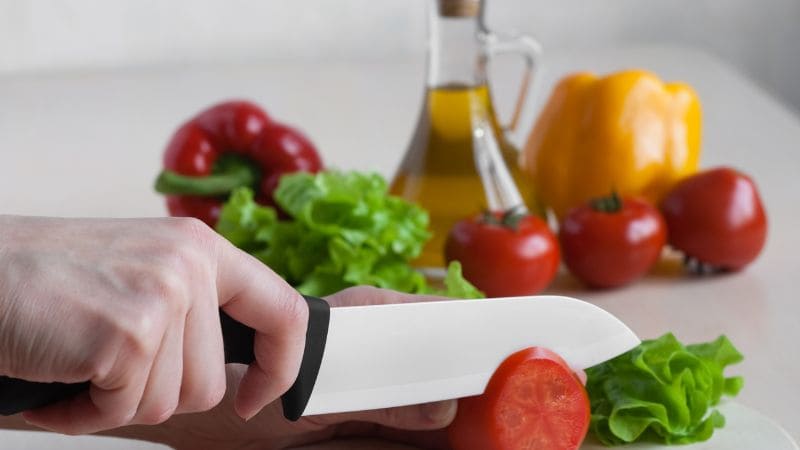
Ceramic Knives Limitations When Slicing Meat
Although these knives reach an edge that never wears out, doubling as the ideal knife for slicing, there are some constraints that every cook be it a novice or a professional must have in mind which is a problem when longevity of the blade is brought into question as well as the type of meat that the knife is required to properly cut through.
Hammering and Dulling Risks
What makes ceramic knives special more than anything is the difficulty, however it makes cutting harder than normal so every time force or pressure is applied to a ceramic knife, the chances of it chipping or breakage only increase, and this brittleness means that just using the knife with soft items isn’t enough as the knife will still get chipped or maybe even break, this means that twisting or bending the knife, or even using it for cutting harder objects isn’t possible.
- Fact: It is a fact that if a ceramic knife is dropped from the height of a countertop there is a 50 % chance that the edges will get cracks or wear out.
- Why It Matters: Not only do chipped blades hassle the person who is using them by not cutting smoothly, they also tend to get dangerous when cut and end up in food instead.
| Risk Factor | Steel Knife | Ceramic Knife |
|---|---|---|
| Dropping from Countertop | Minor denting | High chance of chipping or snapping |
| Twisting While Cutting | Can bend without breaking | Prone to snapping |
| Cutting Hard Vegetables (Pumpkin, Squash) | Suitable | Risk of edge damage |
Unsuitability for Bones and Frozen Meat
Ceramic knives are not designed to cut through bones, frozen meats, or hard shells. Attempting to slice through dense or frozen materials can cause the blade to fracture instantly.
- Best Use: In order to avoid any consequences, fish and cooked material should be preferred with these knives rather than shaped meat.
- Avoid: Frozen meats, whole chickens with bones, and crustaceans.
| Type of Meat | Suitability with Ceramic Knives |
|---|---|
| Boneless Chicken or Pork | Excellent |
| Cooked Steak or Fish | Excellent |
| Frozen Meat | Not Recommended |
| Bone-In Meats | Not Suitable |
Care Requirements
Ceramic knives require more delicate handling compared to their steel counterparts. Simple mistakes in storage or cleaning can reduce the lifespan of the blade.
- Storage: Always store ceramic knives in a protective sheath or knife block to prevent accidental chipping.
- Cleaning: Avoid dishwashers. Hand wash immediately after use and dry thoroughly.
- Cutting Surfaces: Use soft cutting boards, such as wood or plastic, to prevent blade damage. Avoid glass, granite, or stone surfaces.
Tip: Handle ceramic knives like you would a fragile piece of glass—carefully and with respect for their delicate nature.
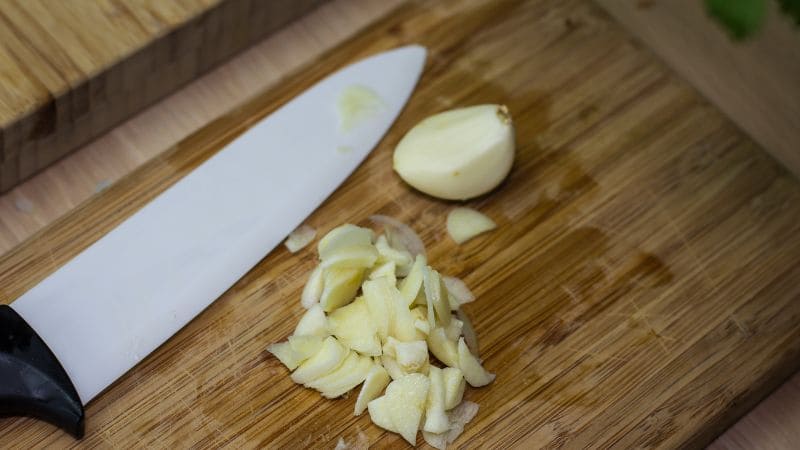
Tips for Cutting Meat with a Ceramic Knife
To make the most out of your ceramic knife when cutting meat, it’s essential to follow the right techniques and use the appropriate tools. Ceramic knives perform exceptionally well for slicing boneless meats and fish, but handling them improperly can lead to damage. Here are some practical tips to ensure your ceramic knife stays sharp and effective:
Proper Cutting Boards to Use
The type of cutting board you use can significantly impact the longevity of your ceramic knife. Hard surfaces like glass, stone, or metal can cause the blade to chip. Instead, opt for softer materials that provide a gentle cutting surface.
- Best Choices: Wooden or plastic cutting boards.
- Avoid: Glass, granite, or marble boards.
| Cutting Board Type | Suitability for Ceramic Knives |
|---|---|
| Wooden | Excellent |
| Plastic | Good |
| Glass | Not Recommended |
| Stone/Marble | Not Suitable |
Recommended Techniques for Slicing Meat
Ceramic knives are designed for precision, not force. To achieve the best results:
- Use Gentle, Long Strokes – Let the sharp edge do the work. Avoid sawing motions that can chip the blade.
- Avoid Twisting – Never twist the knife mid-cut, as this can cause fractures along the edge.
- Cut Straight Down – Apply even pressure, cutting straight down instead of on an angle to reduce stress on the blade.
Tip: Use a ceramic knife primarily for slicing raw or cooked boneless meats rather than chopping or mincing.
How to Maintain Sharpness
Keeping your ceramic knife sharp is key to long-term performance. Since ceramic knives dull differently than steel, maintaining their edge requires unique care.
- Regular Inspection – Check for micro-chips along the blade and address them early.
- Store Properly – Use a sheath or knife block to prevent unnecessary contact with other utensils.
- Sharpen with a Diamond Stone – If the knife begins to dull, use a diamond sharpening stone or an electric sharpener specifically designed for ceramic blades.
| Maintenance Task | Frequency |
| Visual Inspection | After each use |
| Sharpening | Every 12-18 months (if used regularly) |
| Proper Storage | Always |
By incorporating these techniques and using the right tools, you can extend the life of your ceramic knife and ensure it continues to perform at its best.
Best Types of Meat to Cut with Ceramic Knives
Ceramic knives shine when used for specific types of meat that don’t place excessive stress on the blade. Their sharpness and precision make them ideal for clean, delicate cuts, but it’s important to choose the right kind of meat to avoid damaging the blade.
Boneless Cuts
Ceramic knives are perfect for slicing boneless cuts of meat like chicken breasts, pork tenderloin, and beef sirloin. The lack of bone ensures the knife’s edge remains intact, while the precision allows for uniform slices.
- Ideal Cuts: Chicken breast, pork loin, beef tenderloin
- Why It Works: Boneless cuts allow for smooth, uninterrupted slicing without the risk of chipping the blade.
Cooked Meats
Ceramic knives excel at slicing through cooked meats, whether hot or cold. Their sharpness allows for thin, even slices, making them a great choice for carving roast beef, turkey, or ham.
- Examples: Roasted turkey, grilled steak, cooked lamb
- Benefit: Clean, paper-thin slices that enhance presentation.
| Type of Meat | Suitability for Ceramic Knives |
|---|---|
| Cooked Turkey or Ham | Excellent |
| Roast Beef | Excellent |
| Cold Cuts | Excellent |
Fish and Poultry
Ceramic knives are well-suited for filleting fish or slicing raw poultry. Their non-stick surface prevents delicate meat from sticking to the blade, allowing for precise and clean cuts.
- Best For: Salmon, tilapia, boneless chicken thighs
- Advantage: Preserves the texture of delicate meats, preventing tearing or shredding.
Pro Tip: Use ceramic knives for deboning fillets but avoid cutting through tougher parts like the spine or scales.
By focusing on these types of meat, you can maximize the lifespan and performance of your ceramic knife.
When to Avoid Using a Ceramic Knife for Meat
Despite their precision and sharpness, ceramic knives are not suited for all types of meat. Using them incorrectly can lead to blade damage or ineffective cuts. Knowing when to avoid ceramic knives can help preserve their lifespan and maintain their performance.
Cutting Through Bone
Ceramic knives are not designed to handle the pressure and density required to cut through bone. Attempting to do so can result in chipping or even breaking the blade.
- Avoid: Cutting whole chickens, ribs, or bone-in steaks.
- Why: The hardness of bones exerts excessive pressure, which can fracture the ceramic edge.
Frozen Meat and Hard Surfaces
Frozen meats are too dense for ceramic blades to handle effectively. Slicing into frozen cuts can create small fractures along the blade, eventually leading to larger chips.
- Avoid: Frozen beef, pork, or fish.
- Why: Ceramic’s brittle nature makes it vulnerable to sudden impacts and hard textures.
| Type of Meat | Suitability for Ceramic Knives |
|---|---|
| Bone-In Pork Chop | Not Suitable |
| Frozen Chicken Breast | Not Suitable |
| Whole Fish with Bones | Not Recommended |
Hard or Dense Cuts
Tough cuts of meat, such as brisket or beef shank, often require a level of force that ceramic knives cannot withstand. These cuts can dull or chip the edge prematurely.
- Avoid: Brisket, beef shank, and other tough cuts.
- Why: Dense textures put too much strain on the delicate ceramic edge.
Tip: Use a heavy-duty steel knife or cleaver for tasks involving bones or frozen meat, and reserve your ceramic knife for softer, boneless cuts.
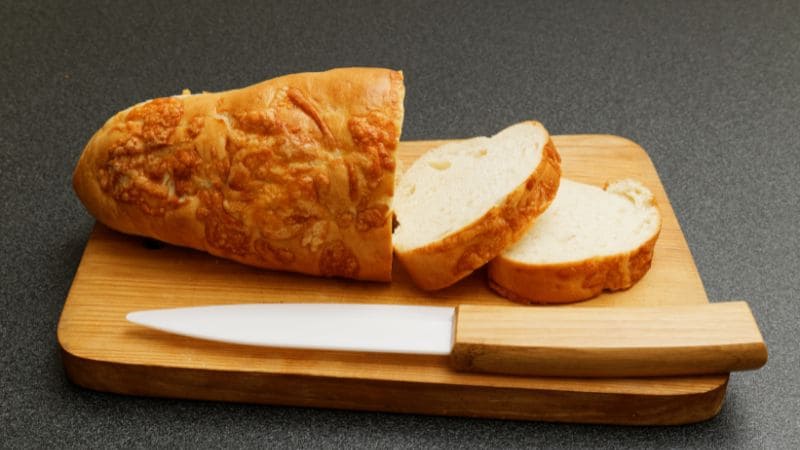
How to Care for Ceramic Knives After Cutting Meat
Proper care and maintenance are essential to preserving the sharpness and longevity of ceramic knives. Although these knives require less frequent sharpening, they are more susceptible to chipping and cracking if not handled correctly. By following simple but effective care routines, you can extend the life of your ceramic knife significantly.
Cleaning and Storage Tips
Ceramic knives should be hand-washed immediately after use. Avoid leaving them in the sink or dishwasher, as they can easily chip if they collide with other utensils.
- Washing: Use warm, soapy water and a soft sponge to clean the blade. Rinse thoroughly and dry immediately.
- Avoid: Abrasive scrubbers or steel wool, which can scratch the surface of the blade.
- Storage: Store ceramic knives in a knife block, protective sheath, or on a magnetic strip designed for ceramics.
| Care Task | Recommendation |
|---|---|
| Washing | Hand wash only |
| Drying | Dry immediately with a soft cloth |
| Storage | Use sheath or knife block |
Preventing Chips and Cracks
To avoid chipping the delicate edge, always use ceramic knives on soft surfaces and avoid twisting or prying motions during cutting.
- Use the Right Surface: Opt for wooden or plastic cutting boards. Avoid glass, stone, or marble boards, as they can cause micro-fractures.
- Avoid Dropping: Handle the knife carefully, as dropping it on hard surfaces can lead to breakage.
- Separate Storage: Keep ceramic knives away from steel knives and other hard objects to prevent accidental nicks.
Tip: Regularly inspect the blade for small chips. Addressing minor issues early can prevent larger cracks from forming.
By following these care tips, you can ensure your ceramic knife remains a reliable kitchen tool for years to come.
FAQ About Ceramic Knives and Meat
Can ceramic knives cut raw meat effectively?
Yes, ceramic knives are excellent for cutting raw, boneless meats. Their sharp edges allow for clean, precise cuts, but they are not suitable for cutting through bones or frozen meat.
Do ceramic knives dull faster when cutting meat?
No, ceramic knives retain their sharpness longer than steel knives when used correctly. However, improper use—such as cutting on hard surfaces or twisting the blade—can cause chipping.
Can I use a ceramic knife for slicing cooked meats?
Absolutely. Ceramic knives perform exceptionally well when slicing cooked meats, such as roast beef or poultry, delivering thin and even slices.
How do I sharpen a ceramic knife if it becomes dull?
Ceramic knives require special sharpening tools, such as diamond sharpening stones. Standard knife sharpeners designed for steel blades will not be effective.
What should I avoid cutting with a ceramic knife?
Avoid cutting bones, frozen foods, and dense, hard vegetables. These can cause the ceramic blade to chip or break.
How should I store my ceramic knife?
Store ceramic knives in a protective sheath, knife block, or on a magnetic strip designed for ceramic blades to prevent damage.
Tip: Regularly check your ceramic knife for small chips and address them promptly to avoid further damage.
Conclusion
Ceramic knives are excellent for cutting boneless meats, cooked foods, and fish. With proper care, they offer long-lasting sharpness and precision. However, avoid using them for bones, frozen meat, or tough cuts to prevent chipping. Handle them with care, and they will remain reliable tools in your kitchen.
